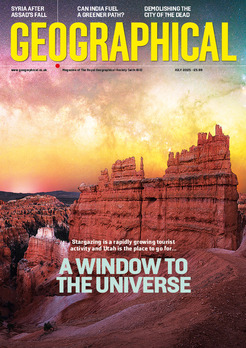
Vast quantities of waste produced from traditional electronics may be a thing of the past as scientists gear up to use orbitronics in tech
By
Is it possible to make traditional electronics greener? In a study conducted at the Paul Scherrer Institute in Switzerland, the answer seems to be ‘yes’ – using ‘orbitronics’ to combat the environmental damage that electronics can have on the planet.
It’s common to replace a phone with a dying battery with the sleekest, smartest version, and the same goes for computers, household appliances and other tech. This is because traditional electronics use the charge of an electron to transfer information, which eventually reduces and means devices must be frequently upgraded. All of this changing and upgrading contributes to electronic waste, also known as e-waste. Each year, the quantity of e-waste produced in the EU sits at 4.9 million tonnes, or 11 kilograms per person.

E-waste can also pose hazards to wildlife, the environment and public health, as up to 1000 different chemicals from e-waste can enter the environment, including lead.
This is where orbitronics come in. Picture a ball attached to a long piece of string, which you swing around your head. This motion creates something similar to ‘angular momentum’. Electrons do the same, albeit they instead orbit the centre of the atom, known as the nucleus. This loop of energy can be thought of as the ‘orbital angular momentum’ of electrons. It is this that is used in orbitronics to transfer information, rather than the charge of an electron.
Scientists hope that orbitronics will offer a more energy efficient way of producing memory devices – those used to store information or data – since it requires smaller charge currents to operate compared to electronics. It also will help to combat e-waste: more efficient devices means they are less likely to need replacing.
The future of orbitronics
There are a range of materials that scientists are considering to use in orbitronics, ranging from titanium to chiral topological semi-metals – metals that possess a helix-type structure similar to DNA.

‘What’s exciting about these materials is that you don’t need to add extra effort or energy to create the orbital motion patterns—it’s already built into their structure,’ said one of the lead researchers on the study, Michael Schüler.
This new research also has now highlighted the existence of monopoles for the very first time, areas where motion is entirely equal across an orbital. This is useful because information could flow in all directions within a device, creating versatility that can be utilised in future technology.
As the fastest growing form of solid waste in the world, e-waste needs to be tackled to ensure the safety of environments across the Earth. And for now, orbitronics offers a hopeful insight into how science can begin to achieve just that.




